
Kimchi vs. Sauerkraut [The Complete Guide] MakeSauerkraut
Difference in texture Smell: Kimchi-breath overpowers kraut-breath! Appearance: Kimchi boasts many more colors than sauerkraut. Sauerkraut is easier to make compared to kimchi. Which is cheaper? Sauerkraut or kimchi? Both boast irreplaceable nutritional value! Kimchi has more micronutrients and microorganisms. Napa cabbage vs. green cabbage

Kimchi and sauerkraut stock image. Image of pickled, korean 98691367
Kimchi, meanwhile, originates in South Korea and is considered a symbol of its culture. The recipe dates back to 1145 A.D. and has more than 200 versions, such as kkakdugi kimchi, baek kimchi, and kkaenip kimchi. For example, pa kimchi is made with green onions, whereas kkakdugi kimchi contains fermented white radish.

Kimchi vs Sauerkraut (김치와 사워크라우트)🌼ASMR cooking YouTube
While kimchi boasts a wide variety of vegetables, sauerkraut has a much more simple list of ingredients consisting largely of green or red cabbage, with the occasional addition of carrots, bell peppers, and beets or apples. Sauerkraut typically ferments for two weeks, resulting in a sour, salty, and tangy flavor.

Easy Homemade Sauerkraut and Kimchi Recipe in a Bag! 9 Steps (with
Cleveland Kitchen Fermented Cabbage: Kimchi vs. Sauerkraut February 17, 2022 When you think of cabbage, you probably have a few different images that come to mind. For many people, coleslaw is perhaps the first thought to pop up, and for others, a Reuben sandwich slathered in sauerkraut might draw the first association.

KIMCHI AND SAUERKRAUT the heart thrills
In fact, both kimchi and sauerkraut are made the same way, using lactic acid fermentation. Chowhound says whether it be for kimchi or for sauerkraut, the process works the same: The bacteria that forms over time ferments and preserves the natural sugars found in the cabbage.

Kimchi vs. Sauerkraut [The Complete Guide] MakeSauerkraut
The big difference between sauerkraut and kimchi is taste. Sauerkraut has a sour and salty taste and is often tangy and acidic. Kimchi tastes salty, too, with a lot more spice and a signature umami flavor, which means savoriness.
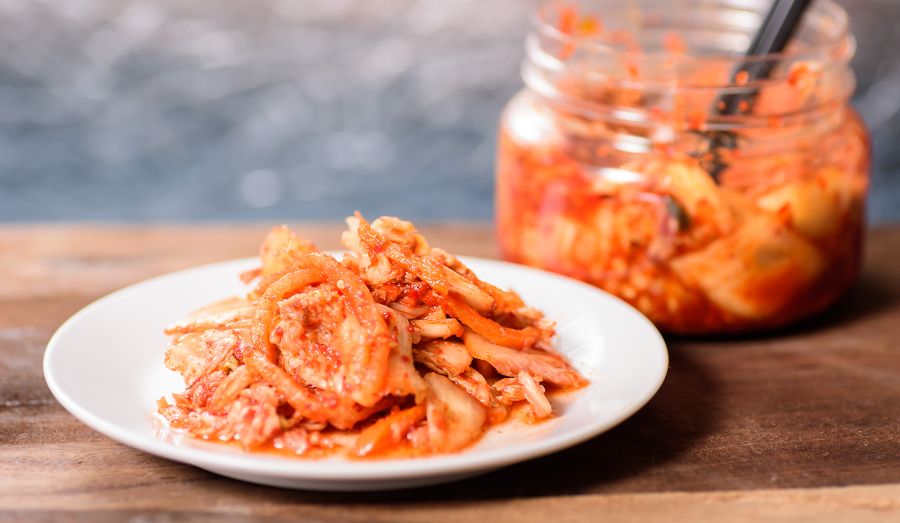
Home Fermentation Sauerkraut and Kimchi RedTea News
DIY If you want to try making your own, see our Basic Sauerkraut recipe, and our Basic Napa Cabbage Kimchi recipe —plus, some more handy tips. When you're ready to give sauerkraut and.

Das "koreanische Sauerkraut" Kimchi selbst machen Brain Food Magazin
What Is the Difference Between Sauerkraut and Kimchi? The biggest difference between sauerkraut and kimchi is the ingredients used. Sauerkraut is traditionally made using regular green cabbage and salt. By comparison, kimchi is made with Napa cabbage and many different vegetables, sauces, and spices, and there are many kinds of kimchi. Ingredients
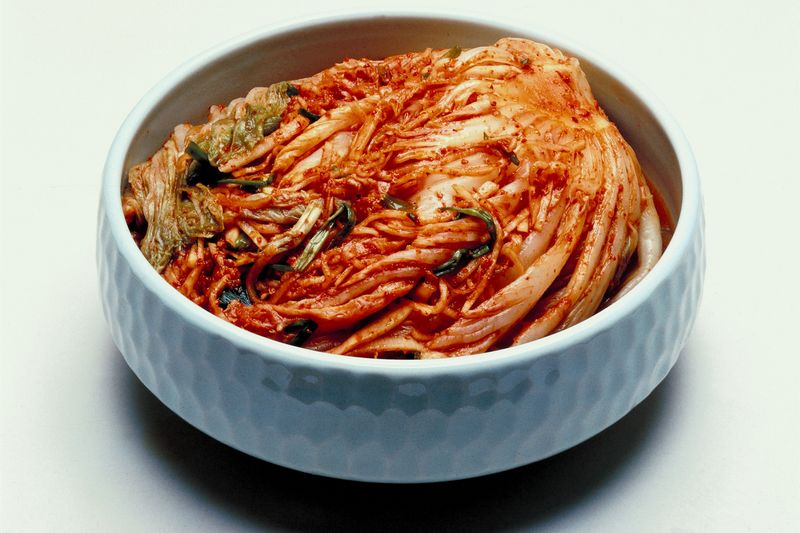
Part 5 Kimchi vs. Sauerkraut Fermenting Vegetables The Rambling
July 22, 2020 Posted by Susan Grey 0 comments Sauerkraut and kimchi represent some of the best probiotic-rich superfoods that can be made via fermentation. These two share not only a similar preparation method but also some of the ingredients. What's the difference?
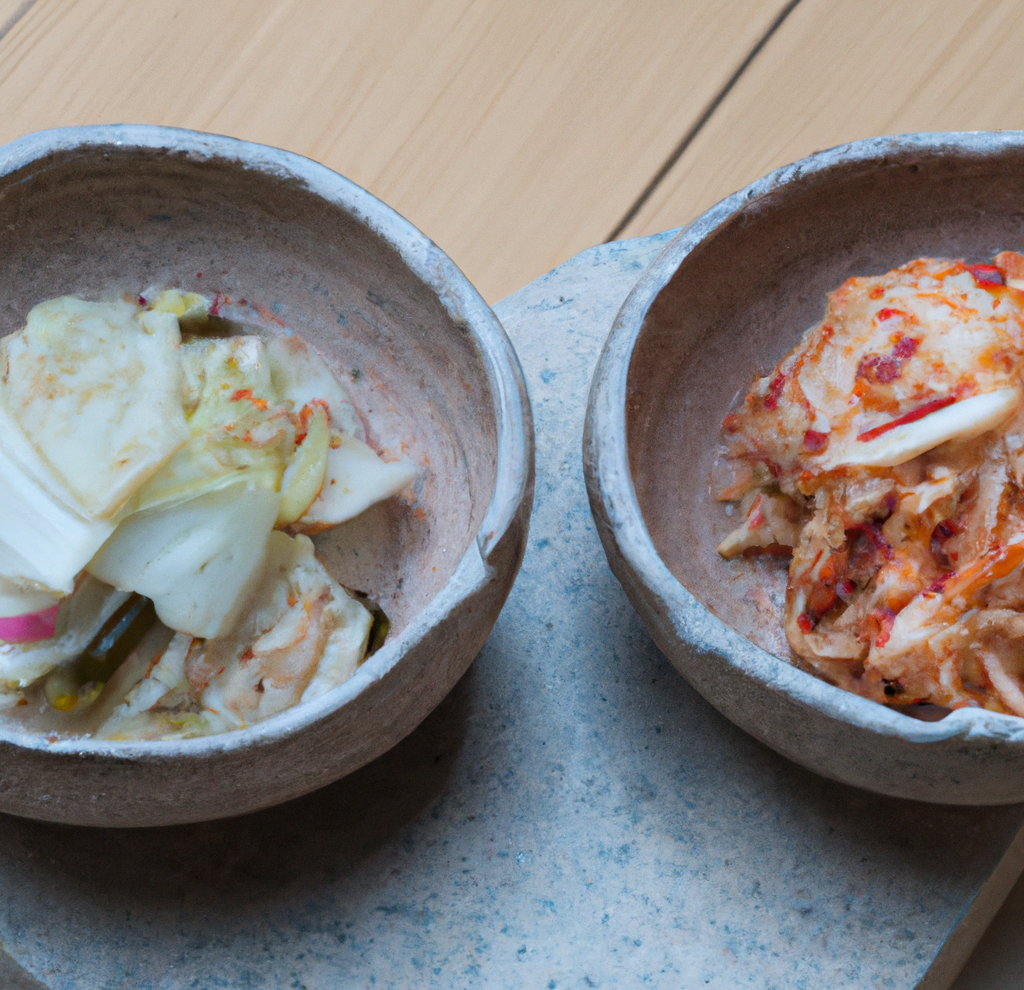
The Good Gut Guy
Flavor Sauerkraut: Some people describe sauerkraut as having a tangy and vibrant flavor that adds a pleasant acidity to dishes. The taste of sauerkraut does not appeal to everyone, as its strong and distinctive flavor can be an acquired taste. Kimchi: Overall, the taste of kimchi can be quite bold, vibrant, and complex.
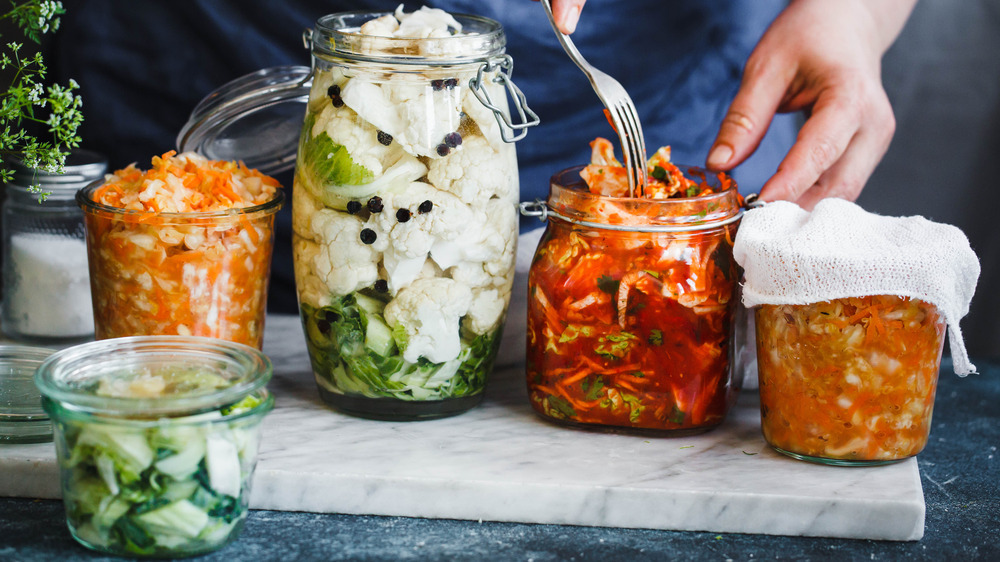
What Is The Difference Between Kimchi And Sauerkraut?
Sauerkraut vs Kimchi: Unraveling the Secrets of Fermented Cabbage Last updated: October 31, 2023 By: Jessica Asian-Inspired, Canning/Preserving Sharing is caring! Embark on a gastronomic journey exploring sauerkraut vs kimchi; discover their history, preparation techniques, taste variations, and remarkable health benefits.

Kimchi vs. Sauerkraut Guide] in 2021 Fermented vegetables
So, what is the difference between kimchi and sauerkraut? Both kimchi and sauerkraut are made by fermenting cabbage, but kimchi originated in Korea and sauerkraut was originally a Chinese dish. Kimchi also tends to have a wider range of flavors which range from sour to spicy to salty. Traditional sauerkraut is sour and pungent.
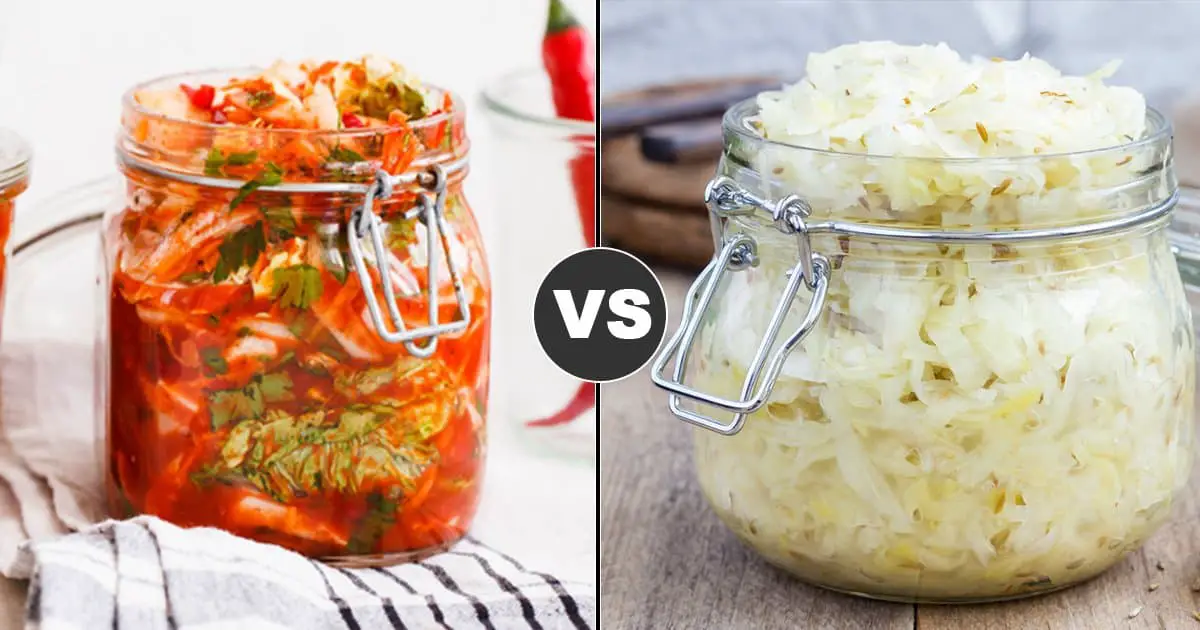
What Is Kimchi And What Does It Taste Like What does kimchi taste like
Kimchi is generally more nutritionally diverse than sauerkraut since it contains a variety of ingredients. Kimchi is a rich source of nutrients including vitamin B6, vitamin C, vitamin K, folate, iron, riboflavin, and niacin. Sauerkraut, on the other hand, is made primarily from cabbage and contains a decent amount of vitamin C, vitamin K1.
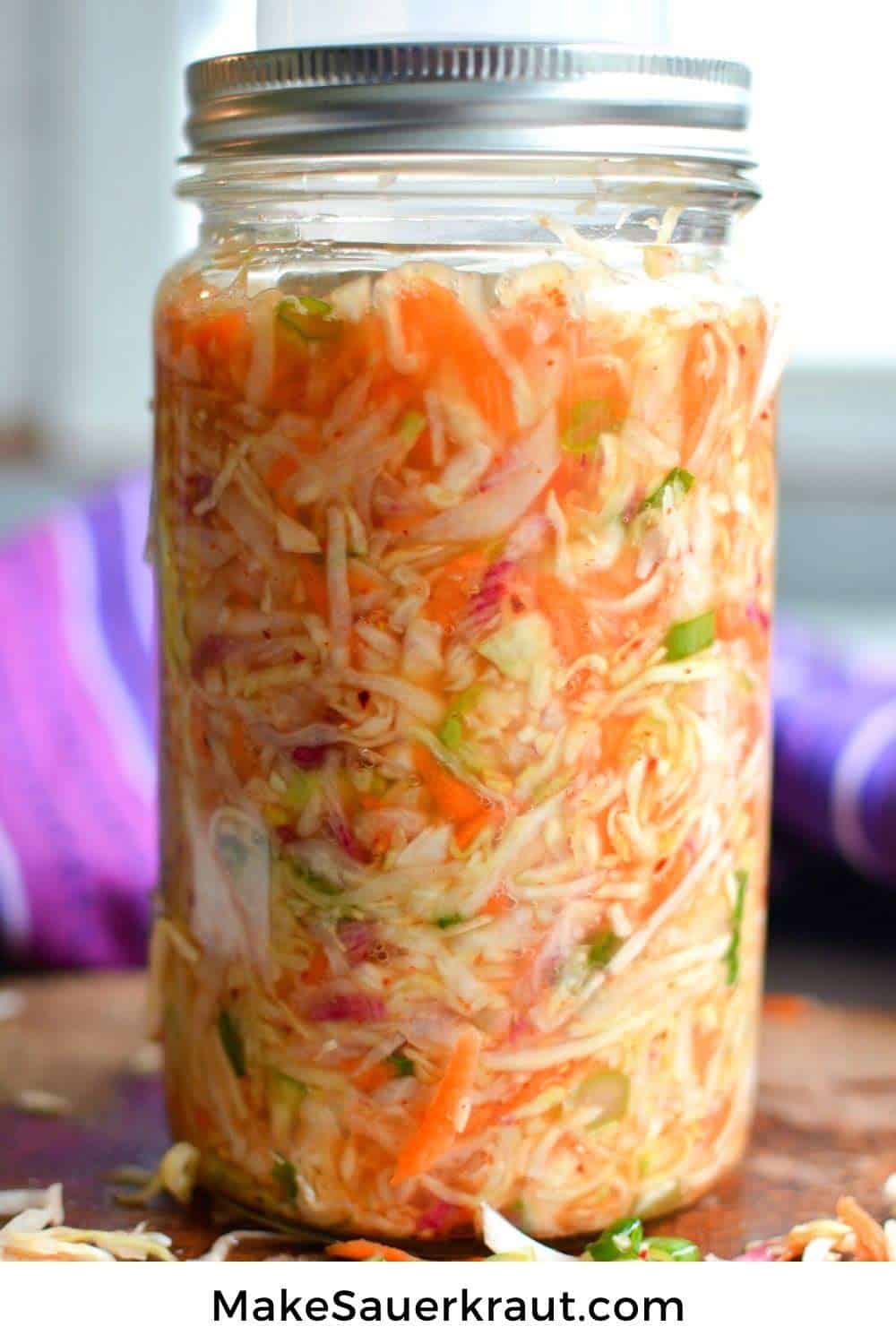
KimchiStyle Sauerkraut Recipe [A SPICY DEPTH OF FLAVOR!] MakeSauerkraut
Nutrition Content - Kimchi Vs Sauerkraut. Kimchi is a fermented vegetable condiment from Korea. It is typically made from Napa cabbage, radishes, garlic, ginger, scallions, red pepper flakes, salt, sugar, and other spices. It is a popular side dish in Korean cuisine. Sauerkraut or kimchee is a traditional German pickle made from shredded.

Kimchi vs. Sauerkraut [The Complete Guide] MakeSauerkraut
Sauerkraut: SPICEography Showdown. Kimchi and sauerkraut are fermented cabbage dishes with long histories and which are highly versatile. The fermentation process for both works the same: lactic acid bacteria cause the sugar within cabbage leaves to ferment. The result is that the traditional versions of both share a sour flavor and are highly.

KimchiStyle Sauerkraut Recipe [A SPICY DEPTH OF FLAVOR!] MakeSauerkraut
Here are four differences between kimchi and sauerkraut: 1. Origins: Both sauerkraut and kimchi are technically Asian dishes, even though the former is best known for the variant that is popular in Germany. You can trace sauerkraut's origins back to China, whereas kimchi has always been a Korean dish. 2.